| Union Switch and Signal was not really known for wigwag
signals. But they did make them. The Style DW Automatic Flagman was first
produced around 1918. These were never patented, so it's unclear exactly
when they were first made. The roads that used them were the ERIE, Boston
and Maine, Delaware Lackawanna and Western, and Canadian Pacific. Also,
under the stewardship (i.e. control) of the ERIE RR, the New York, Susquehanna
and Western (NYS&W) also purchased a number of these. A few other RR's
had a just a few or one. To my knowledge, none were used on any western
roads. For those of us on the West Coast, these are quite strange looking
signals. There is only one known to still be in active service (aside from
museums) in the US - it's located at Joplin, Missouri.
|
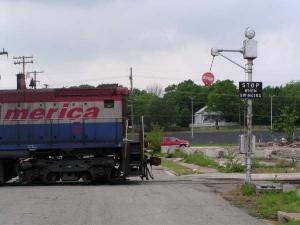
This is the last known active DW Flagman still in service
in the US.
(aside from museums and private collections)
Joplin, Missouri - May 2006. Mark Springer photo.
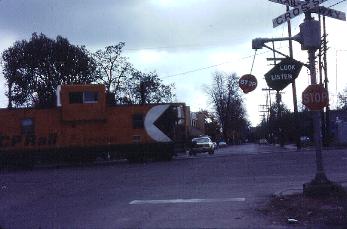 |
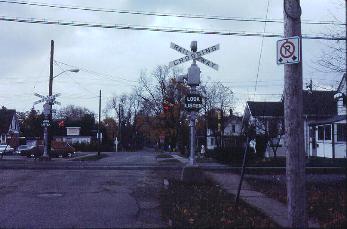
Double set. Notice the short cantilevers. |
These Style DW's once served Chatham, Ont. on the Canadian
Pacific line there.
CP was one of the few roads to install these signals.
When not activated, the
banner hides behind the "look listen" panel to the right.
Not all of these had the
crossbucks mounted in this manner.
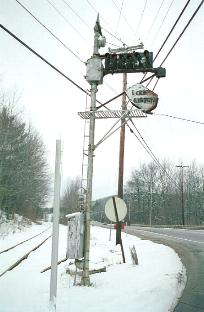 |
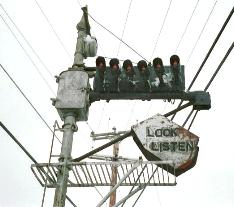 |
| Another variation can be seen here (above) at Wilton
NH. on the former Boston and Maine line now operated by shortline Milford
and Bennington RR. The first thing you will notice is the chase light installation
above the cantilever. This was something that B&M was known for doing.
When the banner would swing, the lights would chase back and forth to simulate
a swinging lantern. These signals were a little taller than most, about
24 feet tall. This is said to be the last Style DW in service. It was retired
in 1993.
|
|
(Acrobat .pdf file) For instruction on installation and adjustment of the US&S DW style wigwag. Thanks to Eric Schmelz of Semaphores.com for hooking
|
|
|
|
|
|
|
|
Express Menu
1/00